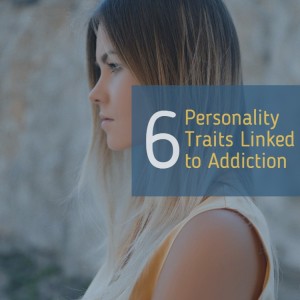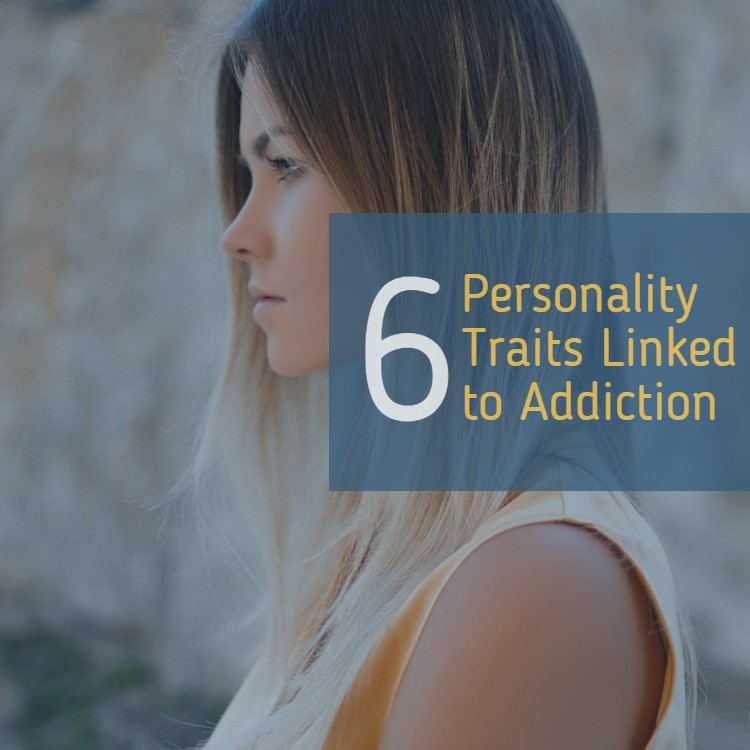 There are several personality traits that have been linked to an increased risk of addiction. It’s important to note that addiction is a complex issue with many contributing factors, including genetics, environment, and individual experiences. Personality traits are just one piece of the puzzle. Here are six personality traits that have been associated with a higher susceptibility to addiction:
There are several personality traits that have been linked to an increased risk of addiction. It’s important to note that addiction is a complex issue with many contributing factors, including genetics, environment, and individual experiences. Personality traits are just one piece of the puzzle. Here are six personality traits that have been associated with a higher susceptibility to addiction:
1. Impulsivity
Impulsive people are often viewed as fun to be around due to their spontaneous nature, but this personality trait has a serious dark side. People who are impulsive often don’t stop to think about the potential risk associated with a decision. They will go with whatever course of action seems like a good idea at the moment, which can often place them in risky situations involving drugs and alcohol.
The link between impulsivity and substance abuse can be seen in the high number of people with an ADHD diagnosis who also struggle with drug or alcohol addiction. Impulsivity is one of the defining personality traits associated with ADHD. Researchers have found that about 25% of adults in treatment for alcohol and substance abuse have been diagnosed with ADHD. This makes addiction five to 10 times more common in people with ADHD.
2. Nonconformity
People who are seeking addiction treatment often describe themselves as nonconformists. They consider themselves as fundamentally different from their peers due to their interests, values, and goals.
While the desire to embrace your individuality should be celebrated, feeling like you’re an outsider can lead to social isolation. This lack of perceived support from friends and/or family can increase the desire to turn to drugs and alcohol when faced with challenging situations.
3. Anxiety
People who suffer from anxiety can find themselves plagued with worries about personal relationships, fitting in, and managing everyday situations. They can suffer from physical complaints such as insomnia, panic attacks, stomach problems, dizziness, shortness of breath, and muscle tension that make it hard to focus on their daily activities. To calm the constant chatter in their minds, they may turn to drugs and alcohol.
People with high levels of anxiety often begin their journey to substance abuse by using cigarettes to calm their nerves. After they develop tolerance to nicotine, they start to add alcohol or benzodiazepines into the mix. The problem with this approach is that they eventually end up needing extremely high levels of all of these substances to approach the state of mental calm they crave.
4. Low Tolerance for Stress
Stress is a natural part of life. However, some people find it significantly more difficult to handle stressful situations, such as an argument with a romantic partner, a high stakes project at work, or an unexpected health crisis. People who don’t learn to develop positive coping mechanisms to handle their stress may turn to drugs and alcohol for temporary relief.
A low tolerance for stress is often associated with high anxiety levels. However, people can learn to increase their tolerance to stress with cognitive behavioral therapy (CBT). CBT encourages individuals to become more aware of their stress triggers and responses. Through self-monitoring and journaling, individuals can gain insight into the situations and thought processes that lead to increased stress.
5. Sensation Seeking
Sensation seeking refers to the desire to constantly seek out new experiences when placed in situations without a lot of sensory input. Everyone engages in sensation seeking behavior to some extent, but people who report high rates of this activity are most prone to addiction.
Sensation seekers are risk takers who enjoy pursuits such as engaging in adventure sports, attending loud concerts or parties, and traveling to meet new people. They are also more likely to drive recklessly and prefer having multiple sexual partners over stable relationships. In general, men and young adults have the highest rates of sensation seeking behavior—which can help explain why these groups also suffer from substance abuse issues at the highest rates.
6. Blame Shifting
Blame shifting refers to finding it difficult to take responsibility for your own mistakes. Substance abusers tend to exhibit this personality trait in higher than average numbers, often arguing that their drug or alcohol use isn’t a big deal or that they could quit using if they really wanted to.
Extreme blame shifting accompanied by a lack of empathy for others is associated with Narcissistic Personality Disorder (NPD). One recent study suggests that about 12% of people with substance abuse problems also meet the criteria for NPD.
What It Means
Most personality type research suggests that basic personality traits are inborn and can’t be changed. Having personality traits that are linked to addiction does not mean that someone is destined to develop a drug or alcohol problem. These traits are considered risk factors, but they do not guarantee that an individual will become addicted. Addiction is a complex interplay of various factors, including genetics, environment, social influences, and individual choices. It simply means that he or she is at a higher risk for addiction and needs to learn ways to channel the negative aspects of certain personality traits into a more positive direction.
Many people with these personality traits lead healthy, addiction-free lives, and many others without these traits can still develop addiction issues. It’s important to understand that while certain personality traits may increase the risk, they are not determinants of addiction.
Prevention, early intervention, and appropriate support and treatment can be effective in reducing the likelihood of addiction even in individuals with these risk factors. Individuals can learn healthier coping mechanisms and make choices that reduce their susceptibility to addiction. Additionally, a supportive and understanding environment can play a crucial role in helping individuals avoid or overcome addiction.
By Dana Hinders
To learn more about our programs, please visit our website.
Related articles:


